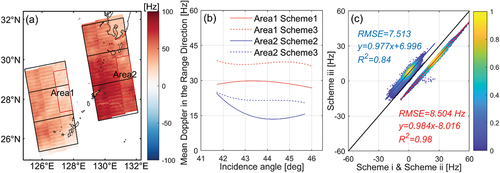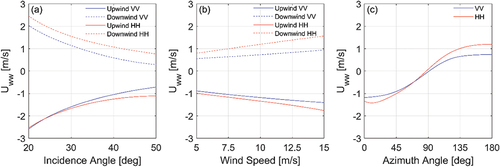Figures & data
Figure 1. Bathymetric map of the Kuroshio region. The solid and dashed lines represent the ascending and descending SAR data passes, respectively, the red circles are GLD buoy data, and the download link for bathymetry data: https://topex.ucsd.edu/pub/srtm15_plus/.

Figure 3. Three correction schemes in the range direction.
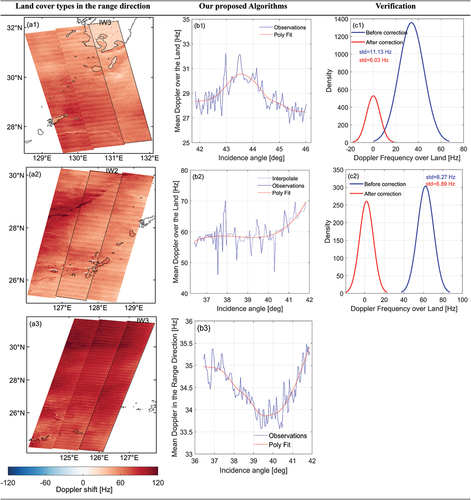
Table
Figure 4. Doppler shifts in the azimuth direction, with is a 10 Hz periodic variation. Figure (a) shows the identification process of the scalloping (only IW1 swath), while figure (b) shows the method applied to the full image.

Figure 5. Result of current retrieval. Figures (a) and (b) show the radial velocities on September 24, 2019, and January 21, 2018, respectively. The Kuroshio central current is the blue line, and the Kuroshio counter Current is the red line. The arrows are derived from the MOB products.
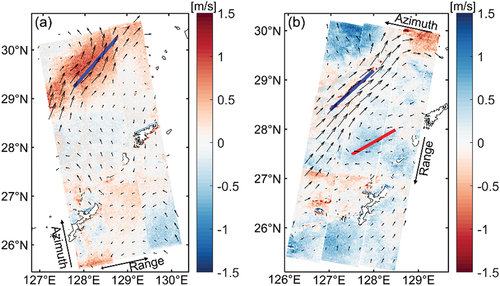
Figure 6. Comparing SAR radial surface velocity with the GLD data. Figure (a) is only the azimuth correction completed, while figure (b) shows the results of range and azimuth calibration. Figure (c) shows the results of wind-wave bias correction.
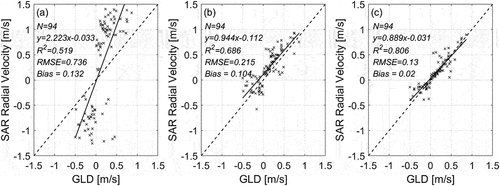
Figure 7. Comparison with ROMS model. (a) shows the ROMS model projected onto the SAR radial direction. (b) depicts a scatter, with different colors representing matching points from different swaths. (c) shows the histogram of the velocities difference (D-Value) between SAR and ROMS.
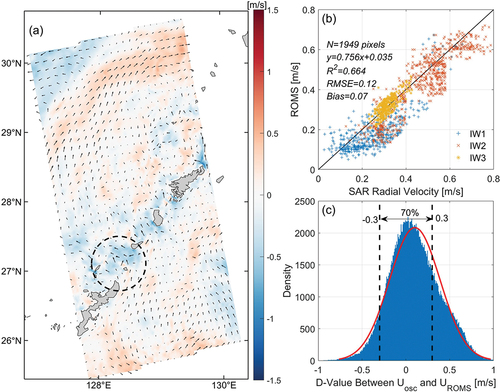
Figure 8. Non-geophysical Doppler correction. (a1) and (a2) show the biased Doppler shift . (b1) and (b2) show the results after correction in the range direction. (c1) and (c2) show the effective geophysical Doppler shift
after removing the scalloping.

Figure 9. Non-geophysical Doppler shift variation in range direction. Figures (a) and (b) show the estimated range bias for the ascending (19 September 2019) and descending (11 January 2019), respectively. Blue line is the mean Doppler shift over land along azimuth, and red line is the error fitting value.
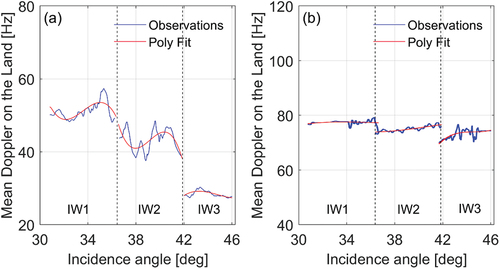
SupplementaryClean.docx
Download MS Word (1.5 MB)Data availability statement
The Sentinel-1 SAR OCN products that support the findings of this study are openly available at https://scihub.copernicus.eu/dhus/#/home.


